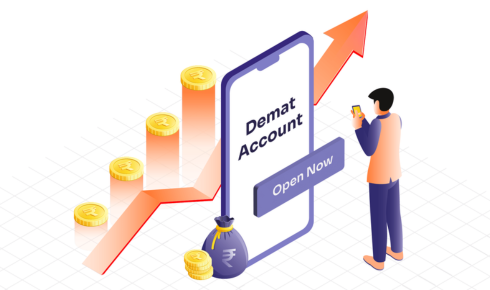With technology, trading in the financial markets has become easily accessible. With a trading app, a person may open a Demat account, do trading, and see their portfolio in real time. From the same platform, traders can view equity, intraday strategies, options contracts, and even algorithmic trading, thus making it a seamless interface. To make the journey ahead, there is preparation involved, awareness to manage risk, and a clear understanding of how different trading methodologies operate.
Step 1: Open the Demat Account
Entering the stock market essentially begins with Open Demat Account. It is an account wherein the shares are held electronically, doing away with the need for a physical certificate. By now, typically, a trading app would be associated with both the Demat account and trading account, making it quite convenient for buying and selling.
Step 2: Learn How to Start Trading
The second step after setting up the account is understanding how to start trading. Trading is different from investments. Investors tend to look to the long term for growth, whereas traders look for small windows of opportunity within a short time frame.
A trading app provides tools such as live market charts, price alerts, and historical free data for decision-making. Beginners will slowly work their way to success by going small and testing their ideas until they feel confident enough to pursue bigger and bolder strategies and trades. Risk management is, however, terribly important during this stage. Placing stop-loss orders, diversifying exposure, and clearly defining an entry and exit point form some of the decisive lines to trade responsibly.
Understanding Intraday Trading
Intraday trading refers to buying and selling stocks on the same day. Positions must close out before the market ends. The aim is to make small profits on price fluctuations.
Intraday trading is made easier through trading apps due to margin support, intraday charts, and instant order entry.
Options Trading and Its Approach
A dimension of trading is opened up by options trading. An options contract is a derivative that gives one an opportunity, but not an obligation, to either purchase or sell an asset at a specific price over a given time.
A trading app provides strike prices, option chains, and premium data on a real-time basis. Options are a versatile instrument for hedging, income generation, or gambling movement. However, with this versatility comes an increase in risk, which is why beginners should get to understand payoff structures first.
Algo Trading Introduction
The act of automated trades based on a computer code that implements the predetermined rules is referred to as algorithmic trading, or simply algo trading. An application that possesses algo features enables traders to program their defined strategies based on, for example, moving average crossovers, price triggers, statistical models, etc.
The advantages of algo trading are as follows.
Execution speed
The absence of emotional bias
Backtesting of strategies on historical data
If, for example, a trader creates a buying rule for when a 50-day average crosses a 200-day average, the app can be set to go ahead and execute a trade when that condition becomes true without the trader needing to be involved any longer. The crux of algorithmic trading is the ability to develop strong logic and test out that logic before execution in a live environment.
Risk and Money Management
With or without the distinction, trading could either be intraday, options, or algo-trading; each has similar risk effects. A trading app may provide calculators and margins or select the portfolio, which can help control exposure. Actions traders can take include:
Set Position Sizes: Never risk too much capital on one trade.
Use stop losses: Automate exits to protect against adverse moves
Diversify: Balance positions across sectors or instruments.
Track performance: Regularly review trades to identify strengths and mistakes.
Benefits of Using a Trading App
Modern trading apps give a great choice when it comes to market access. They include:
Real-time price data and charting tools
Easily transfer funds using bank-to-trading account services
Custom watchlists and alerts
Integrated Demat account for smooth settlement
Access to equity, derivatives, commodities, and currency
By bringing all these features together, a trading app enables traders to keep live strategies while remaining mobile and to never miss their opportunities.
Building Confidence as a Trader
Confidence grows with practice and continued learning. Start small, make trades, assess what worked or didn’t, and tweak your strategy. As you grow, you may begin to feel at ease with intraday setups, options strategies, or algo models. The variety of education resources available in a trading app-tutorials, and market explainers-will help tonight help you along your learning curve.
One trap to avoid is to give in to the temptation to go for quick profits. Instead, one must focus on discipline and process. The traders now grow with the passage of time, developing a style that suits their risk appetite and outlook for the market.
Conclusion
The journey of trading will commence with opening a Demat account through a trading app. Once activated, traders can learn how to start trading in equities, intraday strategies, options contracts, and finally, algorithmic trading. Each approach presents its fair share of prospects and challenges, but with discipline, planning, and appropriate tools, trading can evolve from an uncertain gamble into a structured endeavour.

